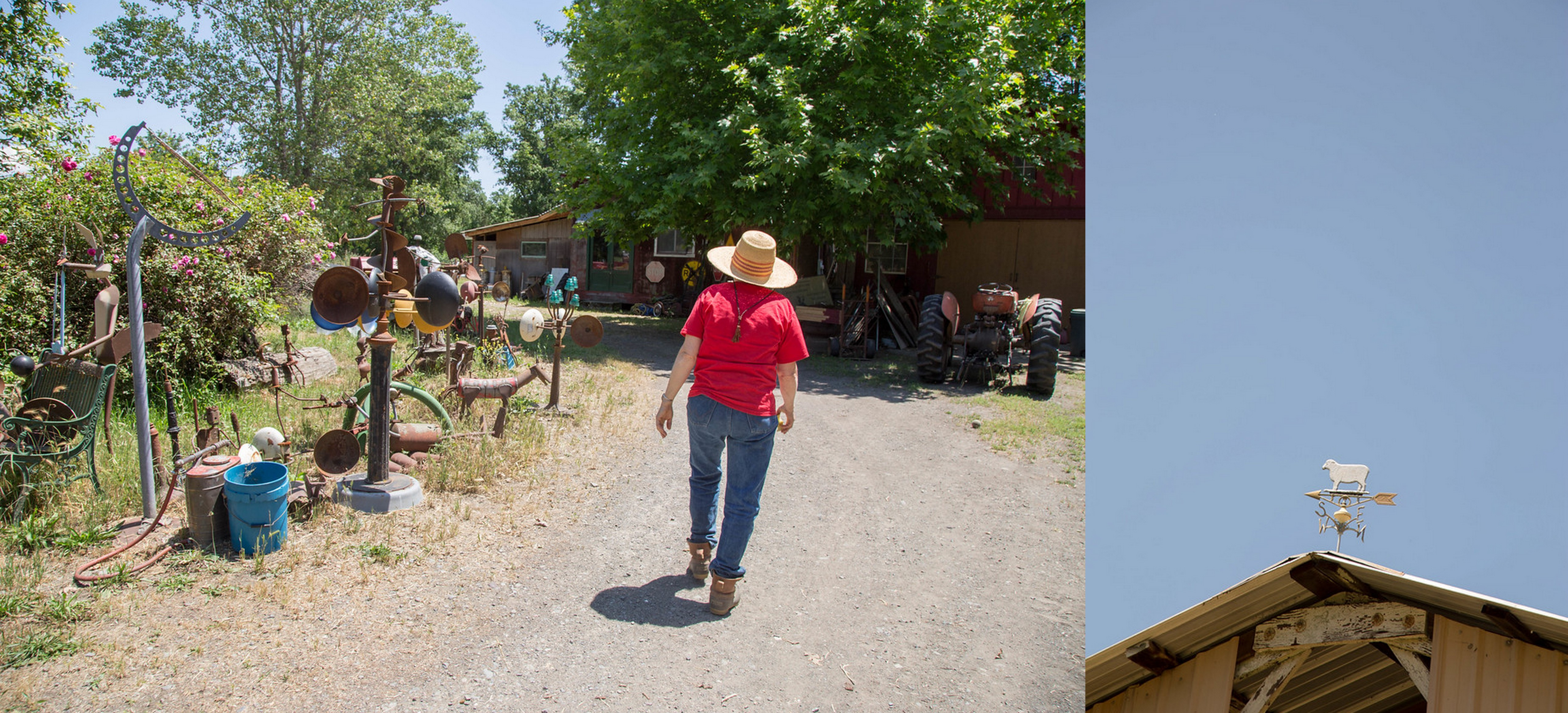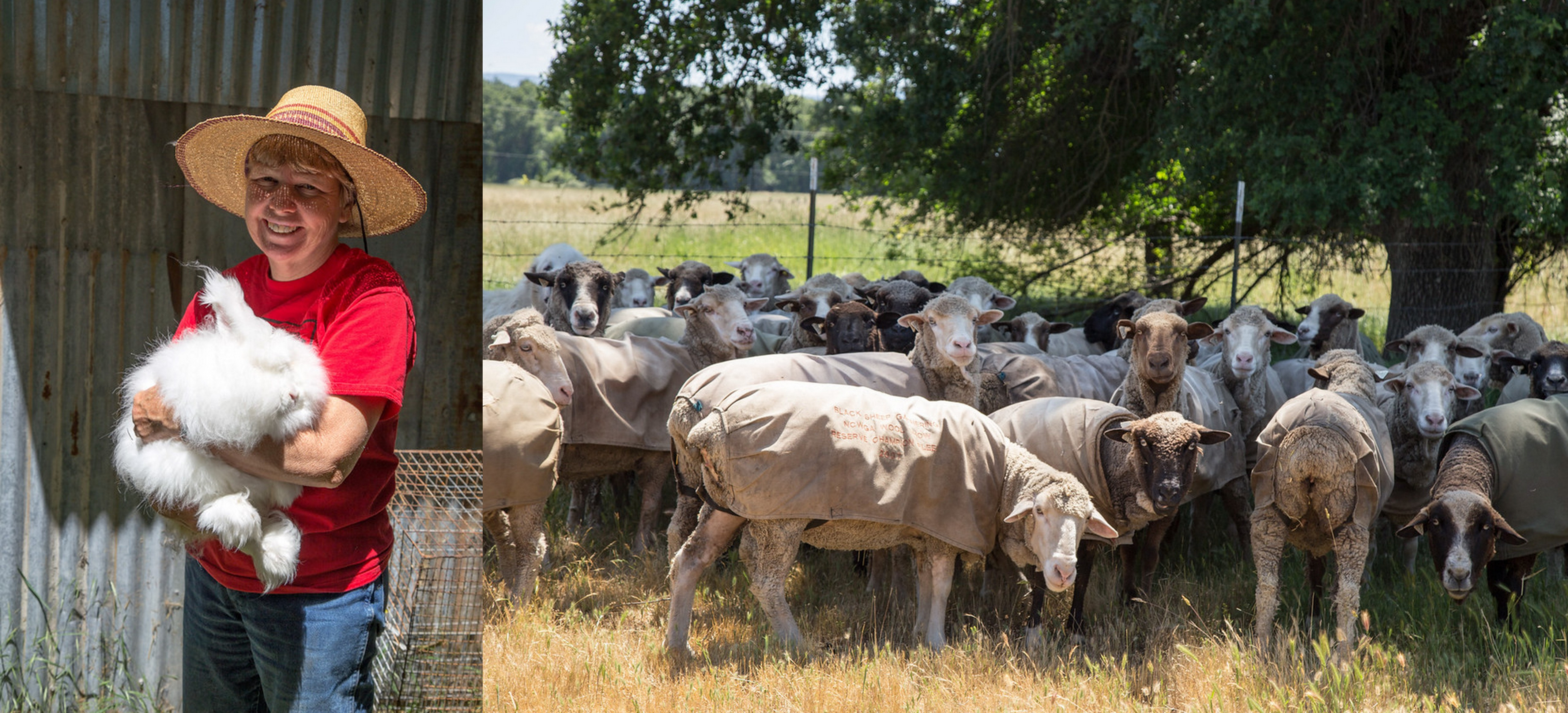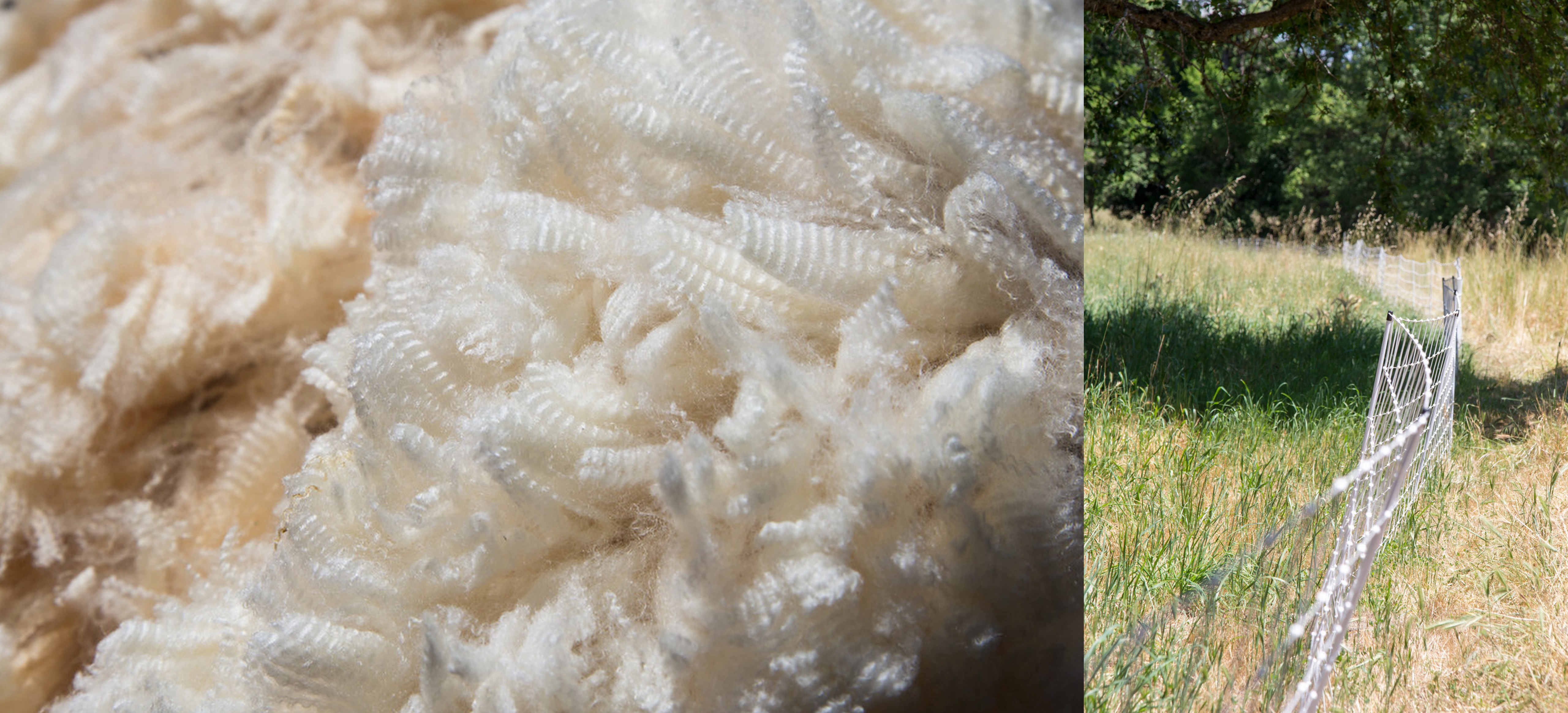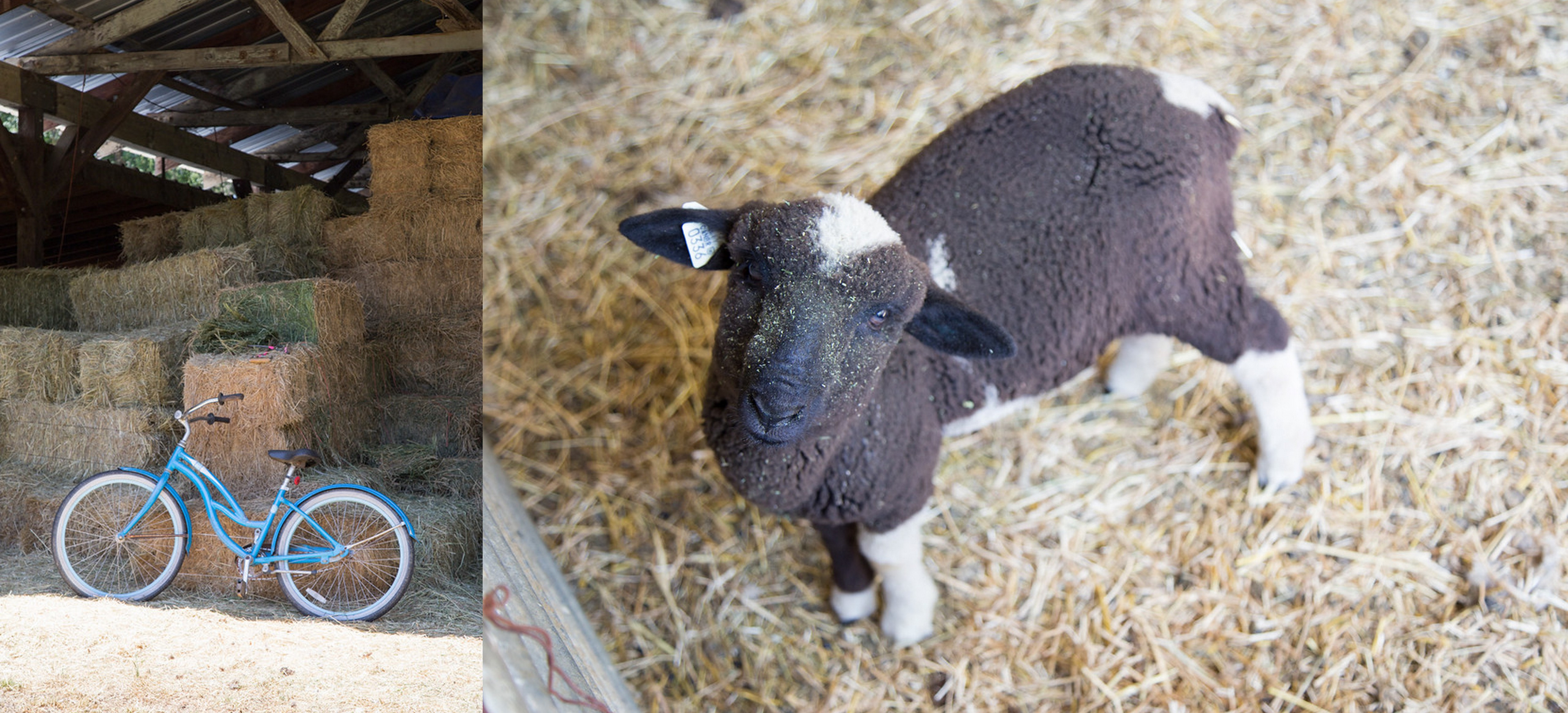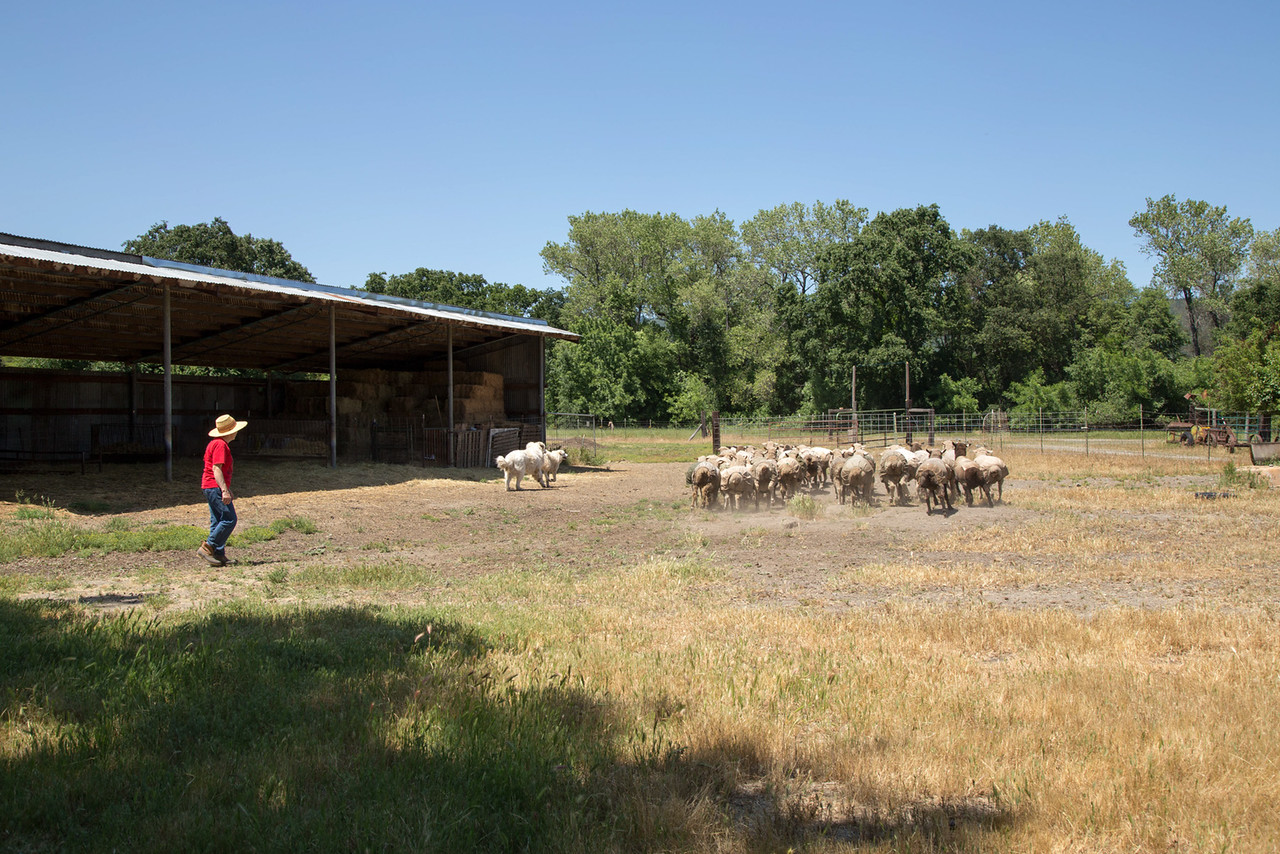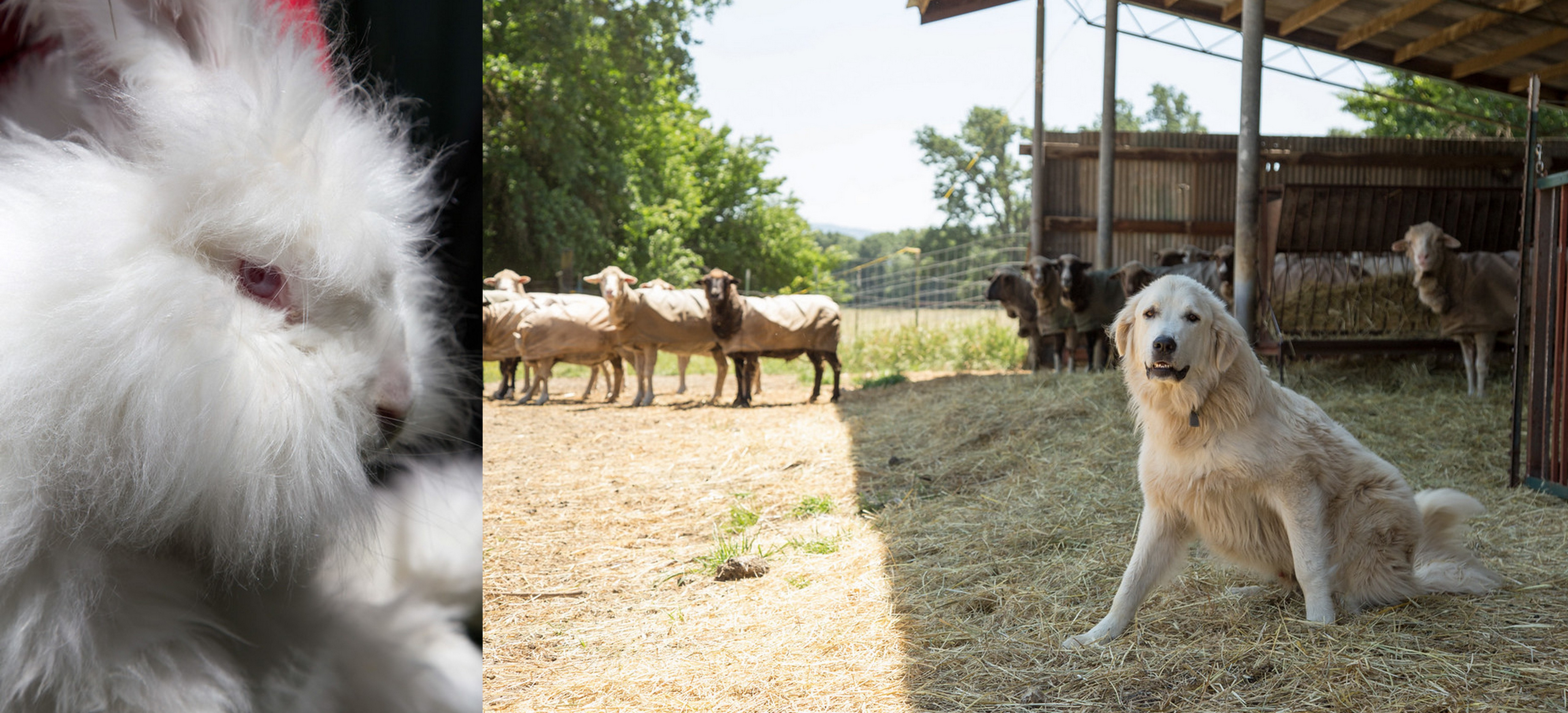Written and photographed by Brittany Cole Bush
I remember meeting Janet at the previous locale of the Valley Ford Mill back in 2015. I was taken aback by her incredible hides of Angora goat and Merino sheep, as well as the renowned fleeces, roving, and yarns she produces at Nebo-Rock Ranch + Textiles. To me, Janet is a ‘no nonsense’ kind of person, practical and clear. She is kind, forward, and clearly a woman who has this work embedded deep within the fabric that makes her.
Upon walking up to the house where we will sit at the kitchen table, I peer around looking at a well-lived in, cozy home and stead, aesthetically unique to the world that Janet and her husband seemingly organically created by just doing what makes them tick. The equipment, the barns, sheds, the orchard, metal sculptures, and even the old dog on the porch, make for an authentic bucolic setting. Janet is welcoming and we get right to business talking about the ranch, her operation, business, experience, and opinions on various things.
Janet moved from Berkeley to Covelo in the early 80’s on the tail of the homesteading movement. She had dairy goats, llamas, and she envisioned starting a trail packing business at a point but it just wasn’t viable when she did the figuring. The llama’s fiber was marginal too. Janet doesn’t do marginal. At this time they lived in the higher mountain pass above Covelo. She, her husband, and two boys lived off the grid until the call of the teenager, and a husband not wanting to commute to town on a dirt road, led them to the valley in 2000. It was in ‘93 that she brought on wool sheep, producing some of the first soft, grey fleece that she is now notorious for. She also used to have a herd of about 48 Angora goats, but now sticks to her sheep, chickens, guard dogs, and a good number of Angora rabbits.
I asked her how she thinks she got into sheep and fiber and she referred to one of her grandmothers, who practiced fiber arts of one kind or another: weaving ,crocheting and knitting. Janet still uses her grandmother’s 4 harness loom. Janet is one of these kinds of people who perhaps was born with the innate skill to observe, go for it, learn, and perfect her way of doing what she does well– and that is producing rather consistent Merino fleeces. She says that her sheep can produce 17 micron count but prefers a 20 to 22 range. The majority of the wool produced is in the 17 to 23 range, she caters to the hand spinners amongst others.
On the 60 acres of Nebo-Rock Ranch, about a third is sub-irrigated, lending way to some support for extended time on the pasture for her flock of over one hundred including the breeding ewes, lambs, and four impressive rams. Managing her land-base for productivity and reduction of invasive weed and undesirable species like fox tail, she aims to utilize the grazing of her sheep as a tool to steward her land. Sometimes the effects of grazing have proven to be positive and other times negative. There are so many factors year to year, as she points out. She employs intensive rotational grazing, partitioning her pastures into sub-paddocks with an effective sheep mesh electric fence line.
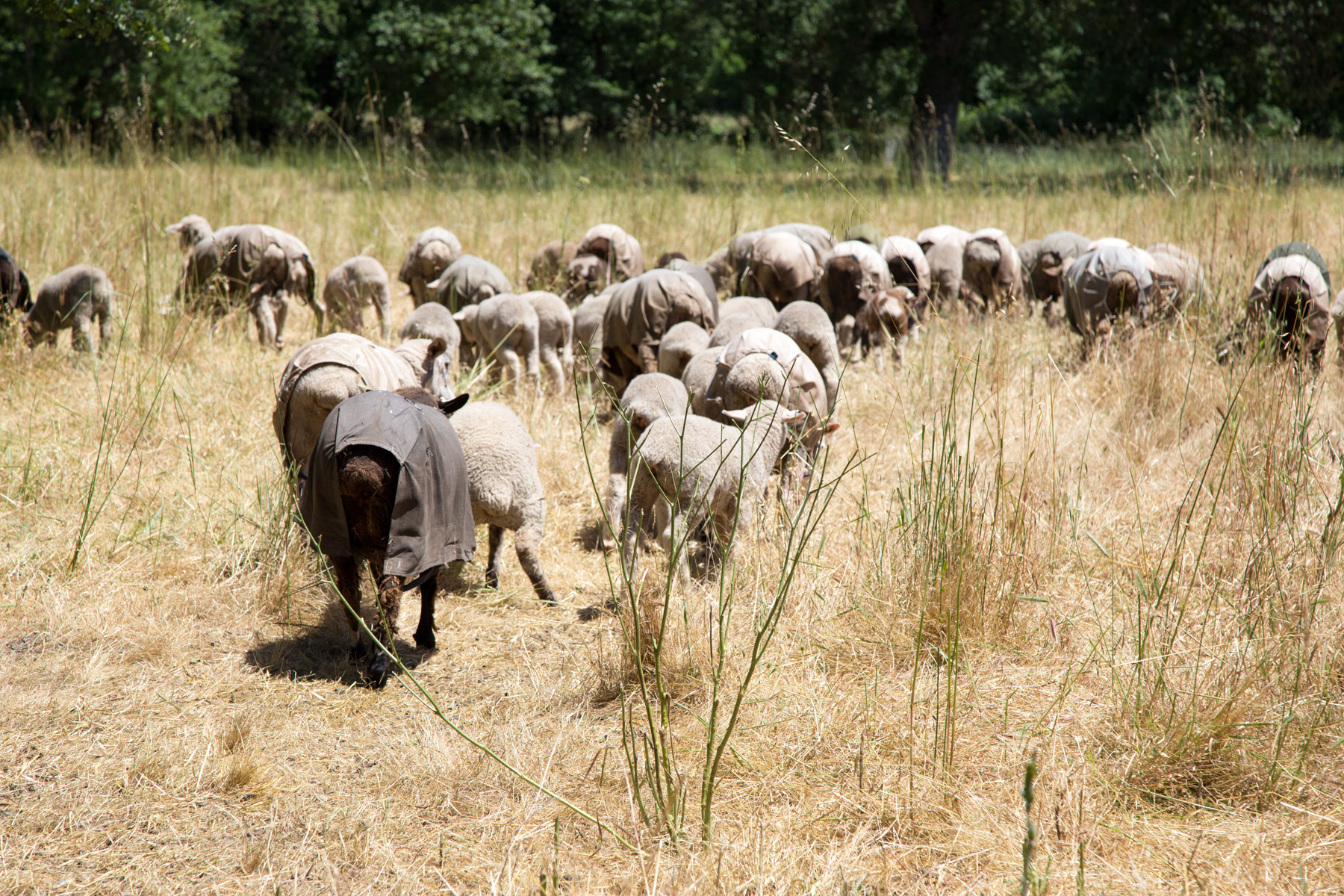
With this strategy she is able to achieve density in her flock, thereby encouraging positive animal impact, and working toward higher productivity and stewardship goals, while creating resilience in challenging and varying conditions. Depending on the year’s rainfall and at what point in the season it does rain, she can have her animals out on pasture as early as mid-February to August, and at times into October.
I am impressed by how Janet appreciates the management of the land benefiting the health of her animals and quality and consistency of her fleeces. Janet is a true stock woman, learnt through experience and valuable animal husbandry skills (personally, I like animal ‘wifery’ better). She defines herself as a farmer, whose workload never falters. It’s day in and day out, the work and commitment. Education and awareness of the folks that buy her products, to understand the true value of what it takes to produce such a fine and special product, is very important to her. The average person just doesn’t understand what the lifestyle of being a farmer entails. She hopes to continue to build a stronger message for individuals to know the incredible value and intensive love, care, dedication, and committed work it takes to produce fiber from healthy, happy animals who are raised on well-managed lands with such great quality.
Having built her flock for a number of years, she selectively breeds her ewes to certain rams to produce the various desired outcomes in their off-spring. She especially enjoys the surprise of what the wonder of genetics brings in the colors of the lambs.
She has observed that specific folds of a lamb’s skin may associate with certain qualities of the wool later on in maturity of the sheep. I also learn that the unique color of the Moorit (red-brown) is produced by the double-recessive gene, also found in different species of animals. Along with the selective breeding, she carries out careful culling and manages her animals with special care for producing the Merino fleeces that she has been so successful with. The Merino sheep wear coats to protect the fleeces from burrs, foxtail and the like, and are also heavily skirted. It’s quality and not quantity that Janet is after, so yields of end product may be less, but quality superior. The total yield of her shorn fleeces are about 800 pounds and end product yield comes out to be around 500 pounds. Their quality has been appreciated by wool judges near and far as Janet has won two years in a row the Black Sheep Cup Fleece Award for the five most valuable fleeces.
At the kitchen table, I ask her some of the tough questions that sometimes make fractures between folks who manage their animals differently from one another– some folks worm, some don’t; some dock tails, some don’t. Janet is dedicated to the health and well-being of her animals and she employs what she feels is best for her flock and has learned through mentorship and experience. If they are struggling and sick she will treat them and employs a twice a year worming regimen, common in traditional sheep care. Merino can also suffer from lice and this is something Janet avidly manages against. Lice make an animal uncomfortable, unhappy, and leads to less yield in fiber production, potentially ruining a whole fleece. Liver fluke is also an issue that has to be managed against, so Janet prescribes a worming regimen that she feels addresses these issues. Fortunately, she has not had to deal with some of the issues that many producers on the coast have to manage. She hasn’t had hoof rot issues, and for that she is thankful.
What I gather from our conversation is that Janet has really mastered the holism of her practice. She not only understands, but excels in all aspects of her operation, including her quality of life, taking out what doesn’t work for her. I think it takes the finesse of experience to know how to build your operation to work for you, figuring in all the complexities of family, land-base, health, and financial feasibility, be it your full-time focused bread-and-butter business or a hobby fiber flock.
Predation is an issue for most sheep producers. At Nebo-Rock Ranch there have been a number of large guardian dog breeds employed for the job of protection over the years. Today there are four. Janet prefers crosses with Maremma as she has observed that they do a good job with staying with the flock. She has dogs with Anatolian Akbash and Great Pyrenees crossed with her Maremma-preferred breed bloodline.
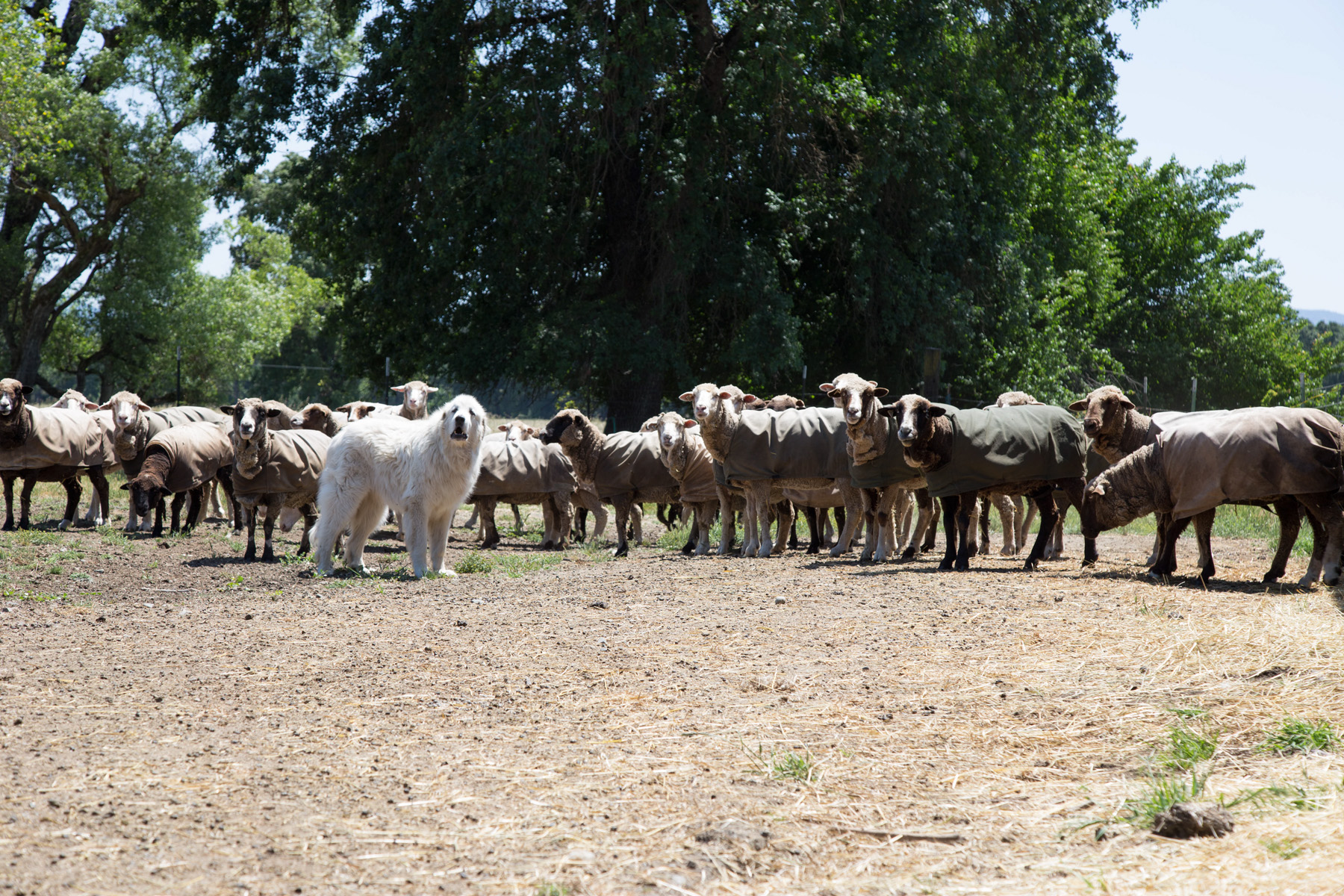
We take a walk to the fleece storage shed and hand-made skirting table, the rams, the ewe sheep, and lambs. I smile at them in coats. They are alert with a good flight zone for me, the new-comer. They don’t mind Janet one bit. The guard dogs are curious but not aggressive to me with Janet’s approval of me in the paddock. Some of these guard dogs were a border collie and pitbull mix. She said she has them because they have the alertness of a pitbull along with the intelligence of a collie. These dogs also won’t attack if introduced properly, which is what Janet had done. She carried on to say they’re really there for the sheep, warning off any preditors, making me feel a lot safer. They are happy sheep and good looking from what I can tell with their coats on.
Next we visit the Angora rabbit hutch. I’ve never seen these curious but beautiful rabbits before and Janet gives me the low down on the care. They turn out to be quite labor intensive to manage, either clipping or combing out the fiber that so many love. She has a select breeding program with the rabbits as well and the colors vary throughout the group that she breeds and cares for. I’m tempted to take home the one rabbit she brings out into the light for me to photograph.
We end our tour at the barn with two little bummer lambs (lambs who for one reason or another didn’t latch to their mothers or lost her at birth). It’s there that Janet’s corral system to routinely care and treat the sheep is. She has the system down. We also talk about some of the challenges she and other producers face. Lack of regional wool mills and mills able to process her fine wool are big challenges and she hopes for the best with the new mill in Ukiah (Mendocino County) developing. She currently sends her fleeces to various small mills in the western US , to have yarn and roving made. Janet would love to see a mill that could do just small runs as it’s a lot of storage and seasonality to wait till she hits minimums to send to be processed. Another issue is consistency in getting the results that she desires.
Janet’s advice to new producers? “Start small; breed for what you want and not for the trends; and recognize that they aren’t pets.” Great advice I think to myself.
The visit is full and complete after visiting the flock of dry ewes and a few more guard dogs. I am loaded with new information and feel like I captured some great photos that would pair nicely with a written piece. After the time spent together, I know that I will be back and l look forward to our next visit or crossing of paths.
If you have the chance to meet Janet, which I’m certain many of you already have, you too will understand how this woman has dedicated her practice to quality and excellence through the beauty and consistency of her fleeces. From one sheep woman to another, it’s true, this is in our blood. In Janet’s case, she’s been loved by the community.
Nebo-Rock Ranch + Textiles offers fleeces, fiber, yarn, sheepskins, and breeding stock, both on the farm and at a variety of fiber shows in California and Oregon.
Brittany Cole Bush is a self-deemed, Modern-Day Shepherdess who works in land stewardship and contract grazing with sheep and goats. As a younger grazier, she is passionate about being a part of the next generation of agrarians workings towards viable and regenerative agricultural systems and businesses. Follow her work online: www.brittanycolebush.com

